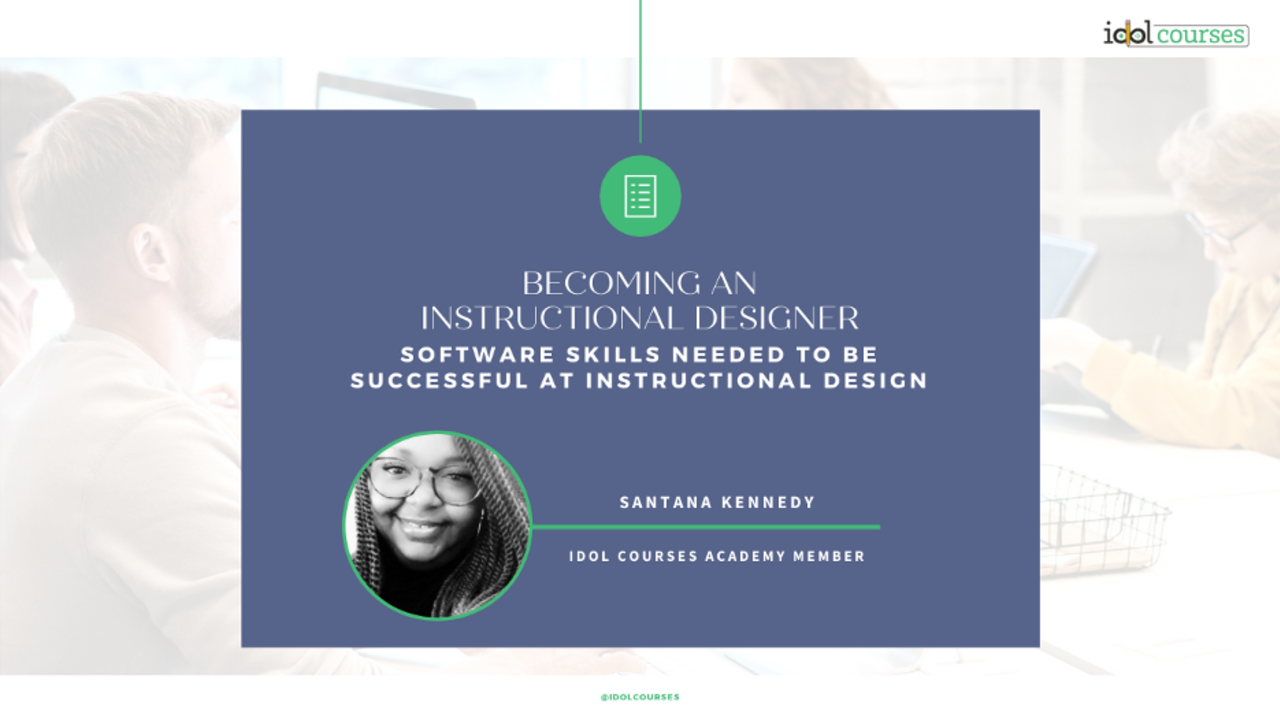Becoming an Instructional Designer: Software Skills Needed to Be Successful at Instructional Design
Jun 25, 2020
Many aspiring instructional designers know and understand the concept of instructional design, but aren't quite sure of the software tools needed to achieve the results. There are several software tools I use on the job daily as an ID. In this blog, I will talk about the ones I feel every instructional designer should learn based on my personal experiences.
- Articulate 360 is a one-stop collaboration tool for you to design, collaborate, and review eLearning courses. It includes two of the most popular course creation apps, Storyline and Rise 360. It also consists of the Review 360 app, which allows you to collaborate with others on projects. I particularly use Review 360 daily as a way for stakeholders to review the courses I have created and provide their feedback. This software program does come with a 60-day trial, so that gives you 60 days to play around with and learn the basics of the software tool. This also gives you enough time to create a couple of sample eLearning courses to include in your portfolio. Before you start your free trial have your storyboards ready
- Camtasia Studio is a software tool used to record, edit, and create videos. In many cases, as an instructional designer, I have had to create instructional videos for eLearning courses and microlearning videos. In both scenarios, I used Camtasia. This software tool allows you to screen record, insert media, PowerPoints, music, etc. to create dynamic videos with a professional look. This software comes with a 30-day free trial, so it's best to have your video storyboard completed before requesting access.
- Vyond, formally known as GoAnimate, is another tool that allows you to create dynamic videos. What makes Vyond different from Camtasia? Vyond enables the developer to tell a story. It includes features that help build compelling visualizations that keep the learner engaged. You can create custom characters and add movement and different expressions that bring the characters to life. This software tool provides many templates to get you started with creating your video and offers a 14-day free trial. This week IDOL courses released a new self-paced course called IDOL Movie Magic. This is the IDOL guide to easily create professional Vyond animations all on one place from storyboarding, branding, and taking the struggle out of creating engaging videos.
- Adobe Creative Cloud provides many software tools an ID can use within their daily job function. Since becoming an ID, I have only had to use Adobe Illustrator and Adobe Acrobat & PDF. I also know many IDs who use InDesign and Photoshop. Being able to edit and manipulate images is critical when you are designing visuals for your eLearning courses. There are also video and audio editing applications along with Adobe XD, which allows you to create user experiences. This software costs as well, but they also offer monthly payment plan options. The student/teacher edition also tends to provide a better deal than individual plans.
- Canva allows you to use your custom brand to design anything from logos, presentations, to infographics. Canva is, by far, one of my favorite software tools because I don't consider myself an expert at editing graphics. Canva makes this more straightforward and quicker. Many times, I am tasked with creating an eLearning with a quick turn-around. I still want my eLearnings to be appealing to the eye, but I may not have the time to create these visuals from scratch. Canva helps me create dynamic visuals to include in my eLearnings within minutes. There are tons of templates available that allow you to edit and make them your own. You can also create GIFs and add animations to your visuals. Even though I have access to the Pro version of this software tool, you can very well get done what you need to get done with the free version as well.
While there are many other software tools out there that could benefit an instructional designer, I came up with this shortlist based on the tools I use the most daily and based on what I have read from about other Instructional Designers. A source you can use to assist you with learning these tools is LinkedIn Learning. Once you have created your storyboards or scripts, you will be well on your way to creating uniquely engaging eLearning and multimedia videos using some of the most dynamic award-winning software tools.
Written By: Santana Kennedy
Santana is an Instructional Designer and educator with over eight years of experience in facilitating and designing learning experiences. She develops these experiences through instructor-led and virtual training. She has Certificates in Training and Performance Improvement, Educational Leadership, and Corporate Instructional Design and Online Learning (IDOL courses Academy). One of her most significant accomplishments was being selected as Teacher of the Year in 2016.
Let's connect via LinkedIn, and follow the link to my Portfolio to view my sample designs.
Stay connected with news and updates!
Join our mailing list to receive the latest news and updates from our team.
Don't worry, your information will not be shared.
We hate SPAM. We will never sell your information, for any reason.


